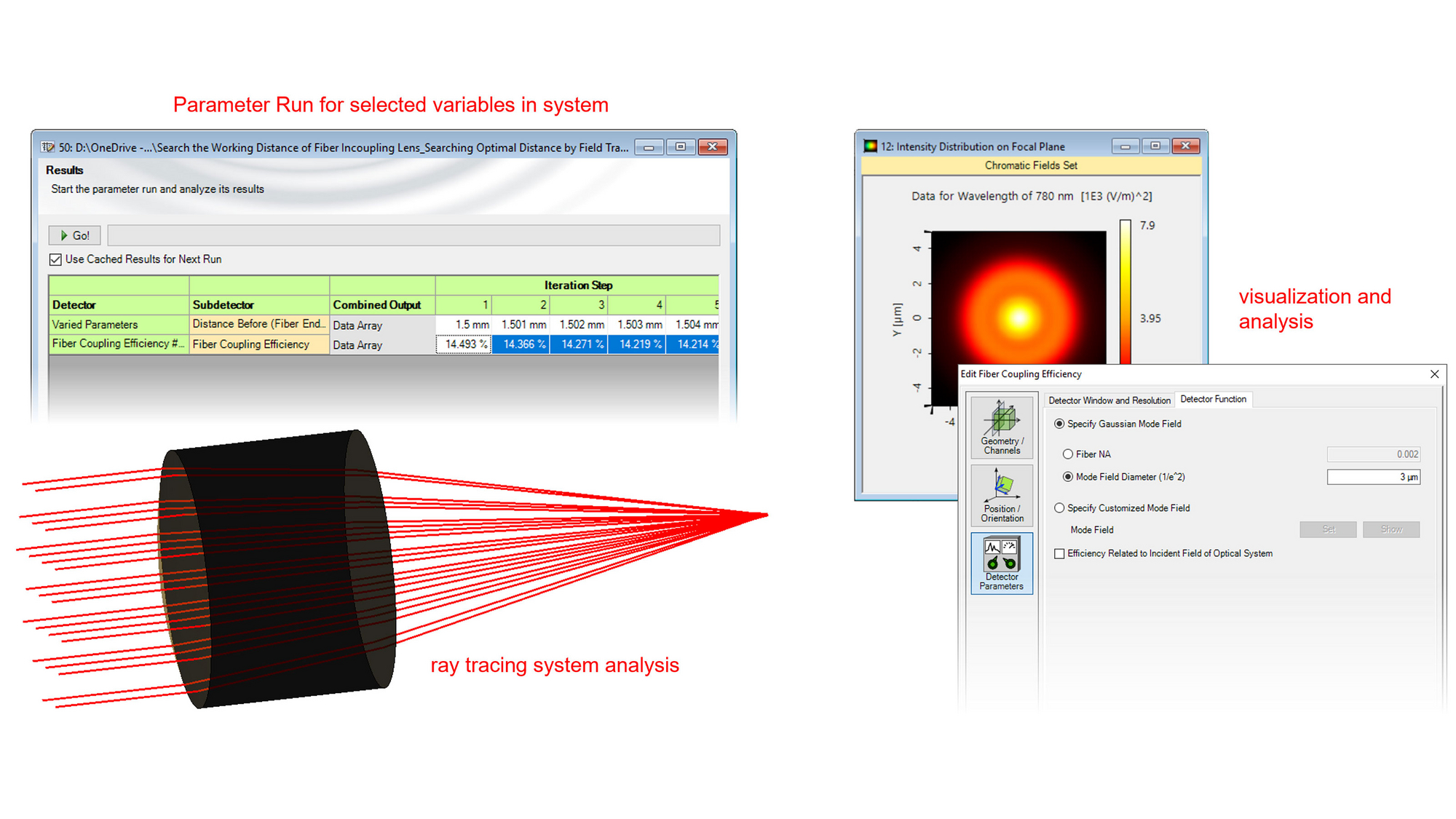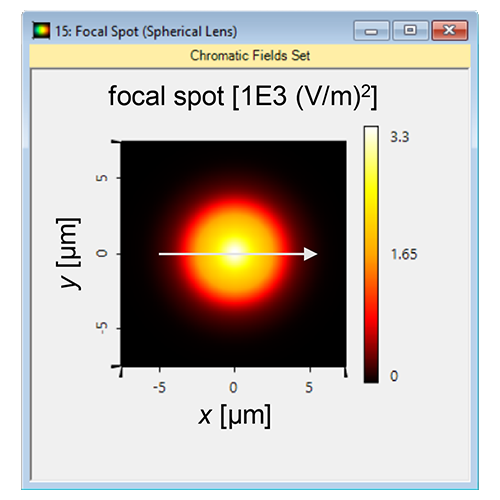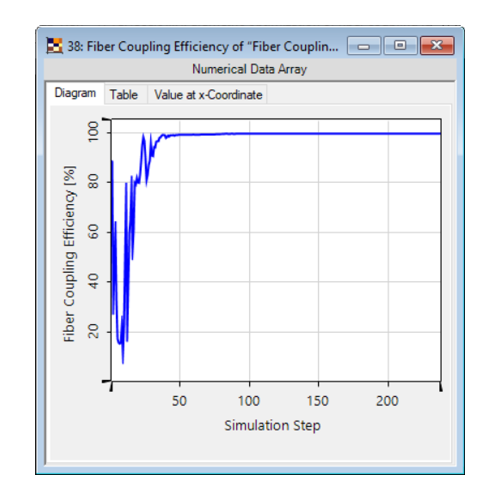Optimal Working Distance for Coupling Light into Single-Mode Fibers
Abstract
Fibers are some of the most versatile components in modern optics. One of their most valued characteristics is their capacity to transport optical energy with very low losses across vast distances (even several kilometers). On the flip side, coupling light into a fiber in a way that achieves as high an efficiency as possible is often a very delicate endeavor: good alignment, for example, is crucial. In this example, we select a commercially available lens, and show how to find the optimal working distance to achieve maximum coupling efficiency. Particularly, we demonstrate that the optimal working distance found by field tracing differs from the focal distance of the lens as predicted by ray optics.
VirtualLab Fusion Configuration
-
 VirtualLab Fusion
VirtualLab Fusion



